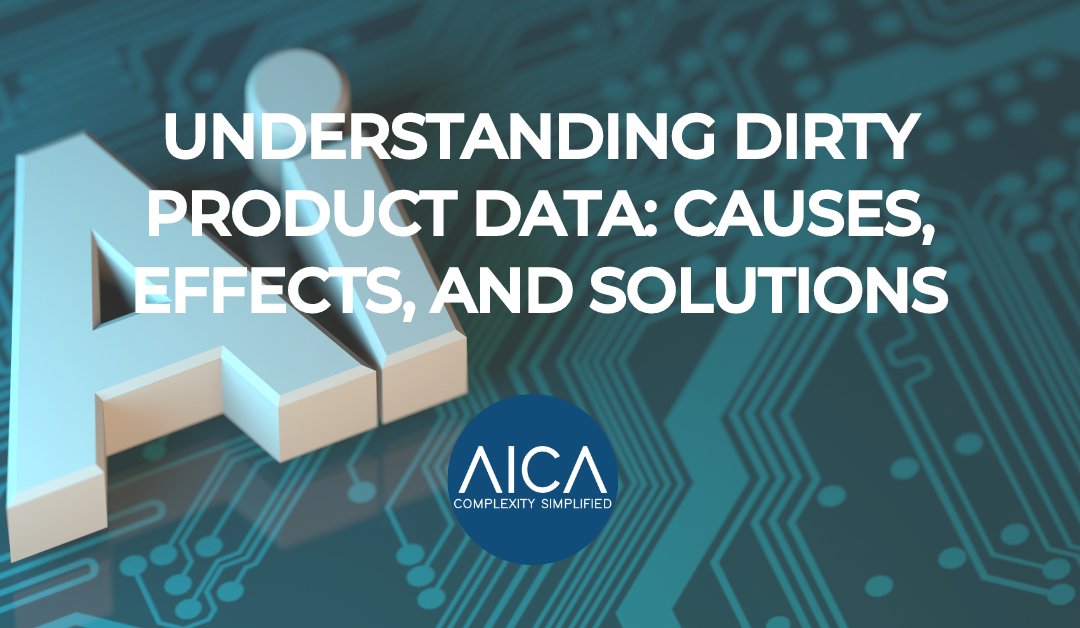There’s no doubt that the accuracy and cleanliness of product data are critical to the efficiency and effectiveness of operations. However, many organisations struggle with “dirty” product data, which can significantly hinder their performance.
What is Dirty Product Data?
Dirty product data refers to information within an organisation’s inventory or product database that is inaccurate, inconsistent, incomplete, or duplicated. This type of data often includes misspelt names, incorrect product codes, missing attributes, outdated information, and redundant entries. Dirty data is not only a result of human error but also of outdated systems, poor data governance, and lack of standardised procedures.
Causes of Dirty Product Data
- Human Error: Manual data entry errors are one of the most common causes of dirty data. This can include typos, incorrect categorization, or inconsistent naming conventions.
- Lack of Standardization: Without standardised procedures for data entry and management, different teams may use varying formats, units of measurement, and terminologies, leading to inconsistent data across the system.
- Data Duplication: Duplicate entries can occur when the same product is entered into the system multiple times with slight variations in name or attributes. This redundancy clutters the database and makes it harder to locate the correct item.
- Outdated Information: Product data that is not regularly updated can quickly become obsolete. This includes incorrect stock levels, old product specifications, or outdated supplier information.
- Poor Integration Between Systems: When different systems within an organisation are not well integrated, data can become fragmented and inconsistent, contributing to dirty data.
Effects of Dirty Product Data
The impact of dirty product data on an organisation can be significant:
- Operational Inefficiencies: Dirty data makes it difficult to locate the correct items within inventory, leading to delays in operations and increased time spent on data management.
- Increased Costs: Errors in data can lead to overstocking or understocking, increased returns, and additional labour costs to manually correct mistakes.
- Reduced Accuracy: Decision-making processes are compromised when based on inaccurate data, leading to poor strategic choices and lost revenue.
- Customer Dissatisfaction: Inaccurate product data can result in incorrect shipments, delayed deliveries, and a general decrease in customer satisfaction, ultimately harming the company’s reputation.
How Clean Product Data Enhances Efficiency in Locating Inventory Items
Clean product data is the cornerstone of efficient inventory management. Here’s how:
Consistency
With clean data, product names, descriptions, and categories follow a consistent format. This uniformity ensures that similar items are grouped logically, making it easier to search for and locate specific products without confusion.
Accuracy
Clean data is free from errors and up-to-date, meaning that every product is accurately represented in the system. This accuracy ensures that inventory searches return the correct items, saving time and reducing the risk of errors.
Search Efficiency
Clean product data enables advanced search functionalities, such as filters, tags, and keywords, to work effectively. This allows users to quickly find products based on specific attributes or criteria, improving the overall efficiency of locating items within inventory.
Improved Automation and Integration
When product data is clean, inventory management systems can integrate seamlessly with other business systems (e.g., sales, procurement), ensuring a smooth flow of information. This integration supports automated processes that further streamline the task of locating inventory items.
AICA: The Solution to Dirty Product Data
Data cleansing involves correcting errors, removing duplicates, filling in missing information, and ensuring data consistency, while data enrichment adds value by classifying products, enhancing descriptions, and translating content into multiple languages. Our AI-driven approach automates these processes, making them up to 90% faster and achieving over 80% accuracy. With our expertise, we help you maintain accurate, organised, and enriched product data, empowering your business to operate more efficiently and effectively across all platforms.
Here’s what separates us from other solutions:
- Speed: Our solutions are up to 90% faster than traditional methods, significantly reducing the time needed for data management tasks. This allows your team to focus on more strategic activities while we handle the complexities of data cleaning.
- Cost-Effective: By leveraging AI-driven approaches, AICA reduces the need for manual labour and minimises errors, cutting down on operational costs and improving your bottom line.
- Exceptional Accuracy: Our specialised Large Language Models (LLMs) achieve over 80% accuracy, far exceeding the 30% accuracy of general AI models. This level of precision ensures that your product data is not only clean but also highly reliable.
- Algorithms Trained on MRO Data: AICA’s algorithms are specifically trained on Maintenance, Repair, and Operations (MRO) product data, ensuring that our solutions are highly relevant and precise for industries where accuracy is critical.
- Customisability: We understand that every organisation’s data challenges are unique. That’s why our services are highly customizable, allowing you to select specific solutions that address your particular needs.
To conclude
By choosing AICA, you gain access to cutting-edge AI-driven solutions that are faster, more cost-effective, and more accurate than traditional methods. Our specialised focus on MRO data and our customisable services ensure that we can meet your unique data needs, empowering you to enhance operational efficiency and drive business success.
Clean data is the foundation of efficient inventory management. Let AICA help you build that foundation with our superior data cleaning and enrichment services. Visit our website today to find out more.
Copyright Reserved © AICA Data International Ltd 2024

